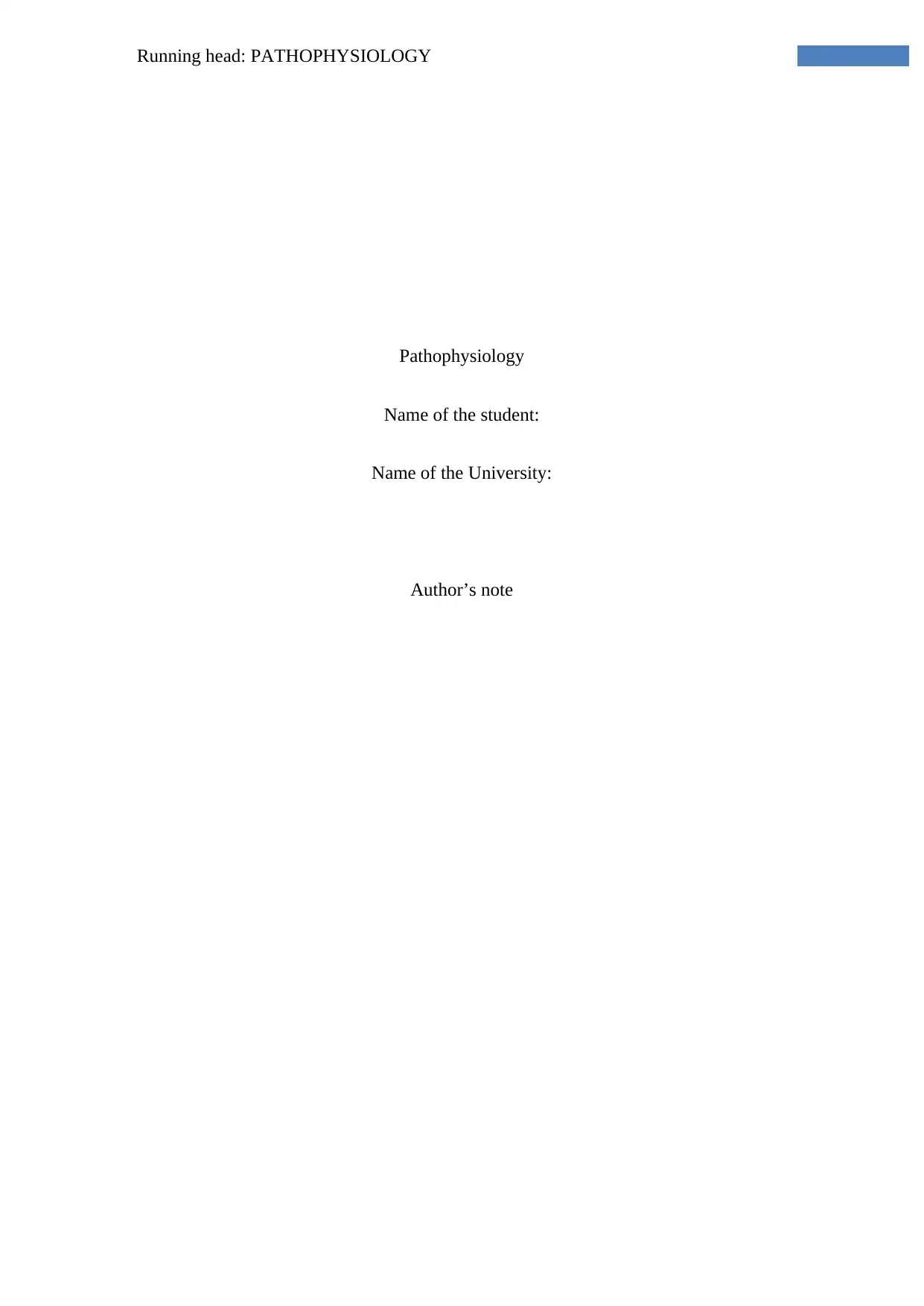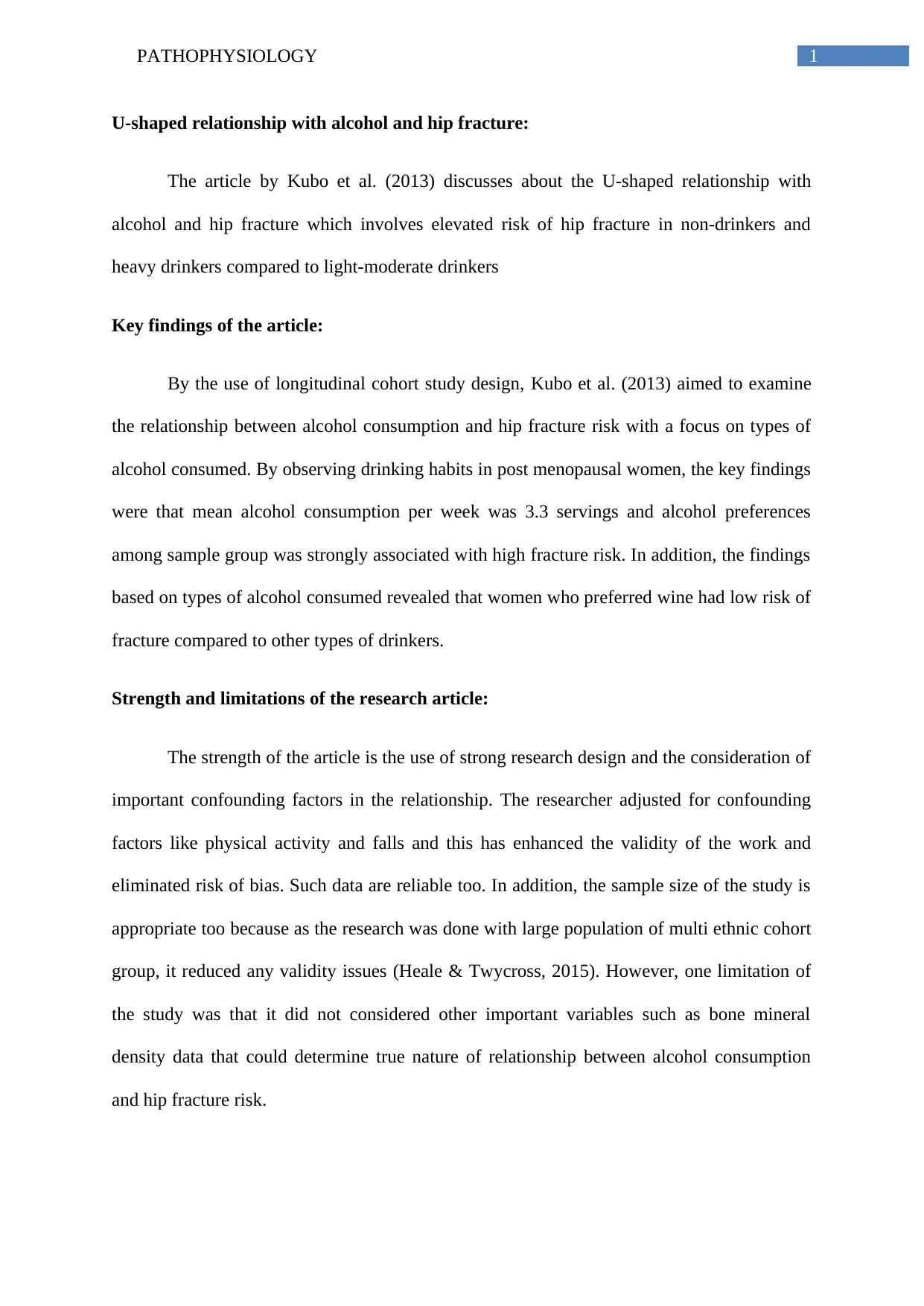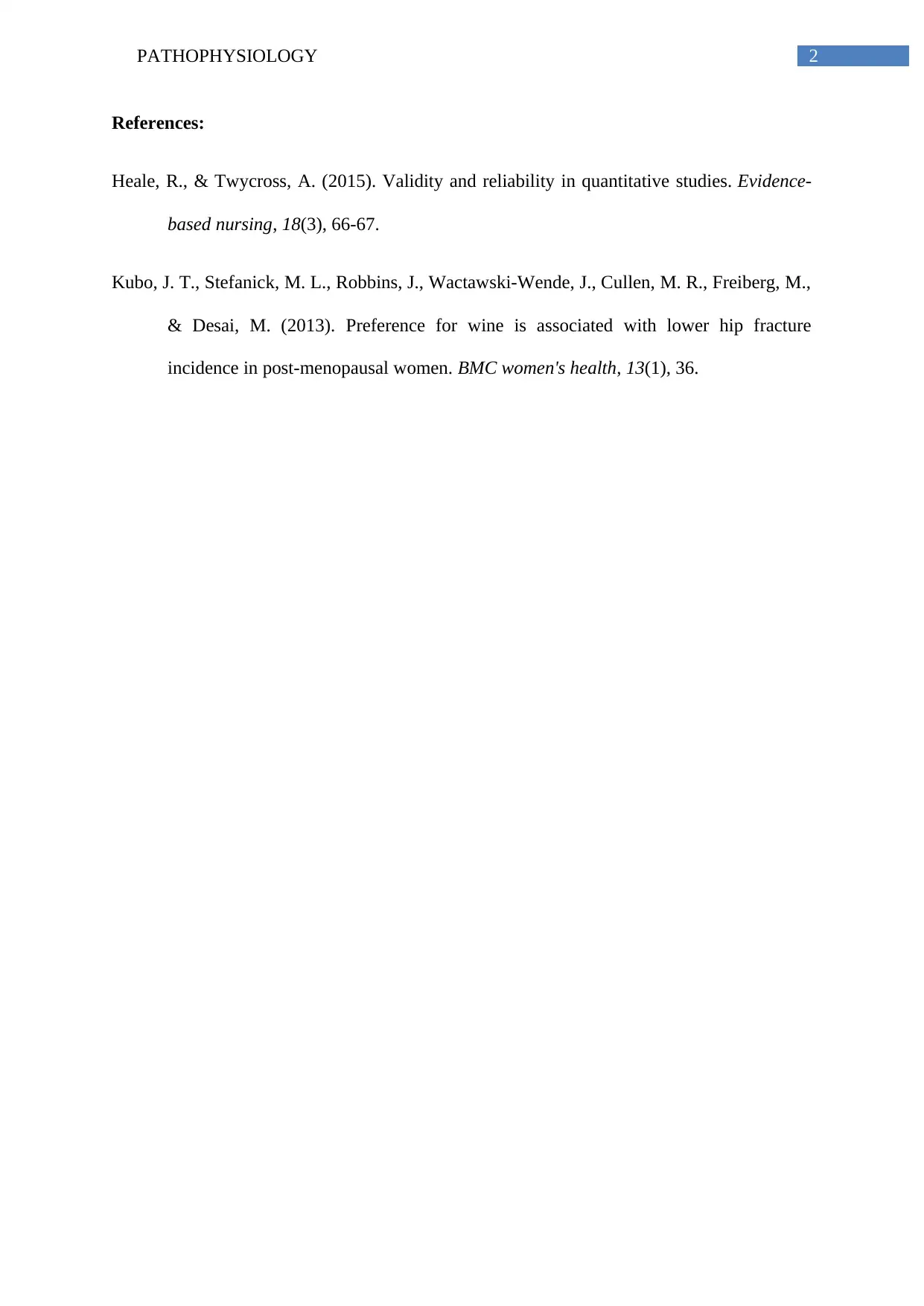Pathophysiology Report: Alcohol Consumption and Hip Fracture in Women
VerifiedAdded on 2022/12/27
|3
|408
|97
Report
AI Summary
This report analyzes the study by Kubo et al. (2013) which investigates the U-shaped relationship between alcohol consumption and hip fracture risk in post-menopausal women. The study, using a longitudinal cohort design, found that light-moderate drinkers had a lower risk of hip fracture compared to non-drinkers and heavy drinkers. The report highlights the key findings, including the association between wine preference and reduced fracture risk. It also discusses the strengths of the research, such as the use of a strong research design and adjustment for confounding factors like physical activity. However, it also points out limitations like the lack of bone mineral density data. The report provides a comprehensive overview of the study's methodology, results, and implications, offering valuable insights into the complex relationship between alcohol consumption and bone health.
1 out of 3




![[object Object]](/_next/static/media/star-bottom.7253800d.svg)